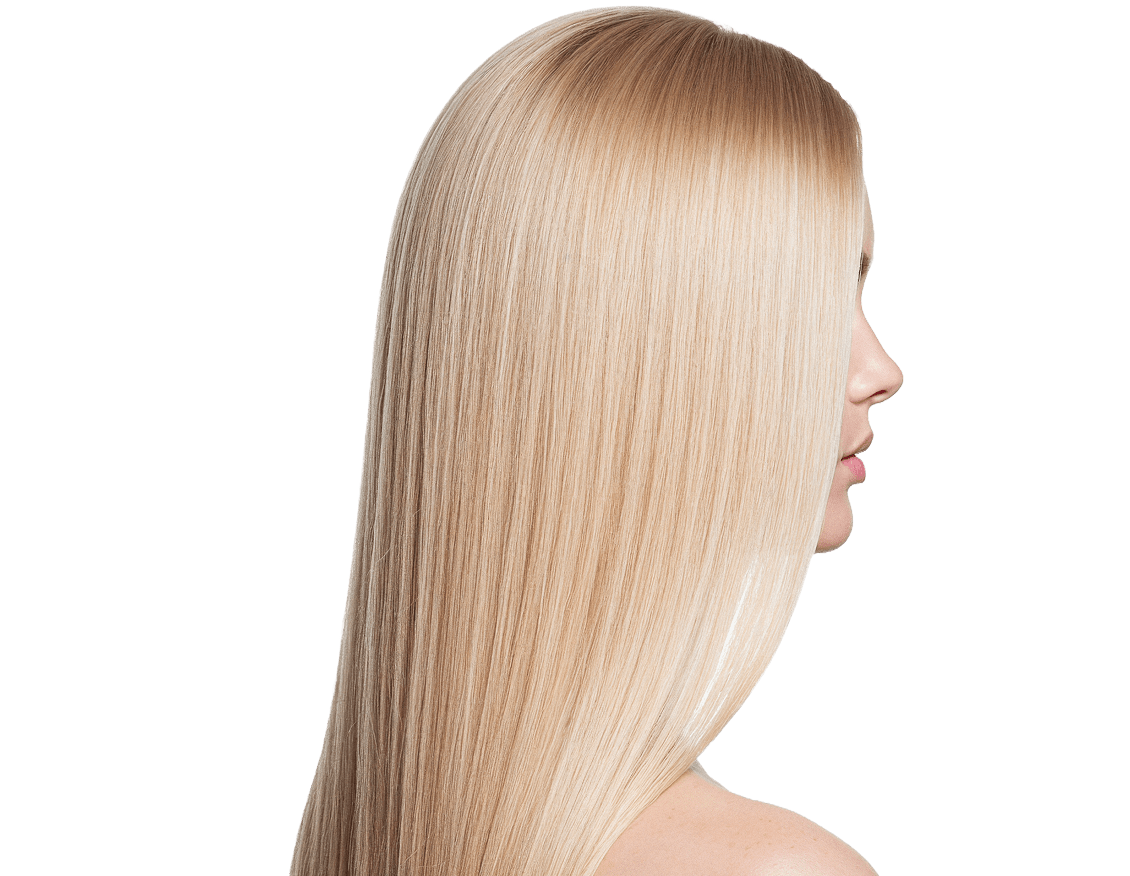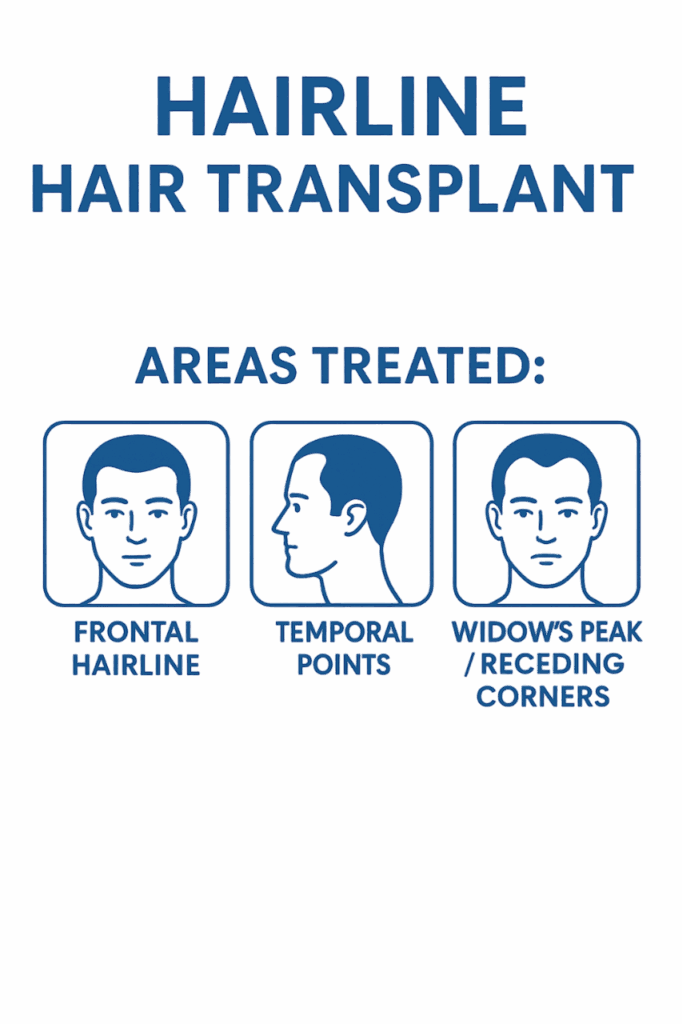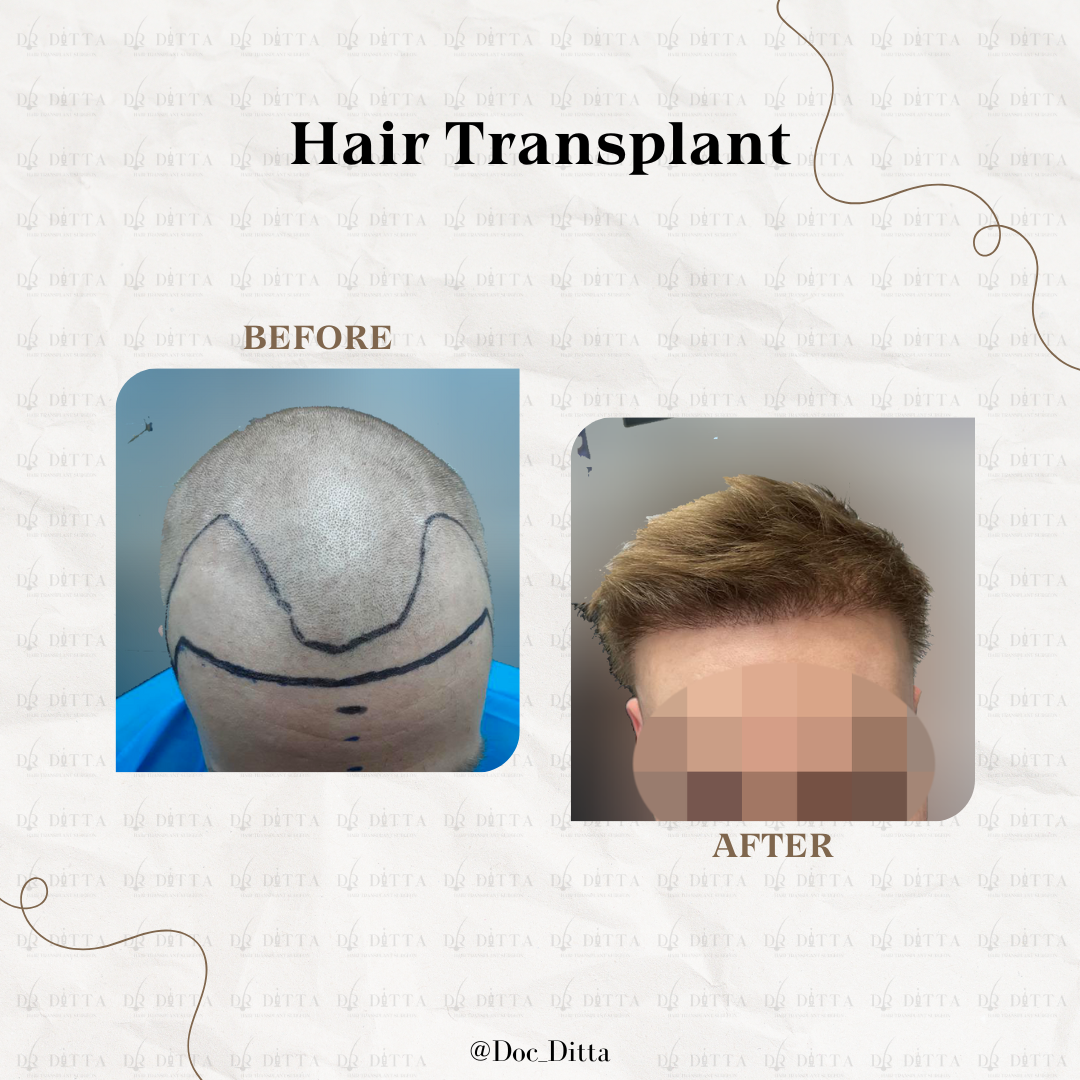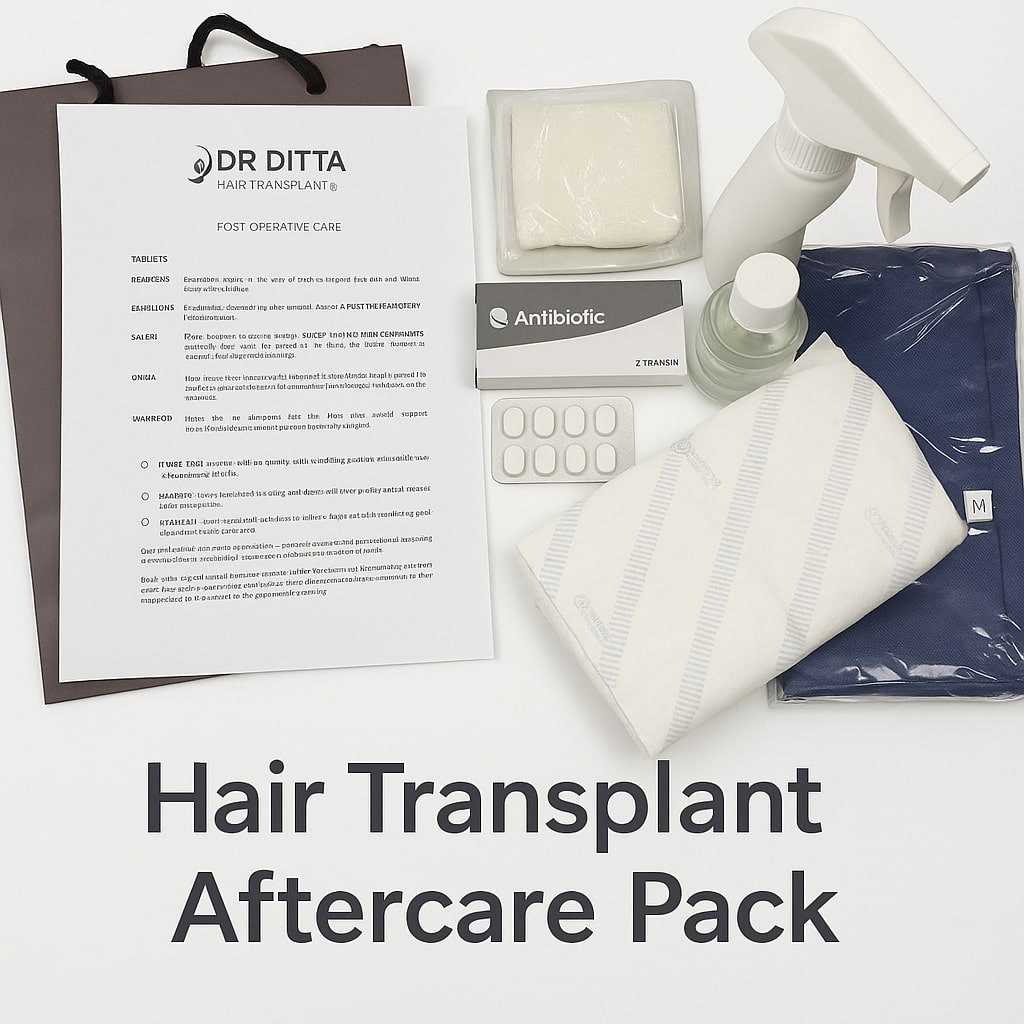Hairline Hair Transplant

Hairline Hair Transplant - All You Need to Know
What is the hairline ?
Your hairline is the front boundary where your scalp hair starts, running horizontally across the forehead from one temple to the other. It plays a big role in framing your face — and is often the first area affected by male pattern baldness. When the hairline begins to recede, especially in the temple regions, it can form an “M” shape, commonly appearing as early as Stage 2 or 3 on the Norwood Scale. In such cases, many people choose to undergo a hairline transplant to restore a fuller, natural-looking hairline.
Hair loss in the temple and frontal scalp area typically requires between 1,800 to 2,500 grafts, depending on how much thinning has occurred.
What is a Hairline Hair Transplant?
- A hairline transplant involves extracting healthy hair follicles — usually from the back or sides of the scalp (the “donor area”) — and implanting them along the front hairline or temple areas (the “recipient area”). This procedure is specifically designed to fill in receded sections, restore natural contours, and create a youthful, symmetrical appearance.
- During the process, your surgeon will carefully design a new hairline that suits your facial proportions, age, and desired density. The goal is to rebuild a natural-looking hairline that blends seamlessly with your existing hair, improving both your confidence and appearance.

Why Choose a Hairline Hair Transplant?
- Precisely targets hair loss in the temples and frontal scalp
- Customised design to match your facial structure and age
- Permanent results with proper post-surgery care
- Enhances facial balance and gives a youthful appearance
- Minimally invasive with a quick recovery time
- Noticeable hair growth begins within 6 to 12 months
- Ideal for correcting receding or uneven hairlines
- Includes thorough aftercare support to ensure healthy regrowth
How Long Does It Take for the Hairline to Heal and Look Normal?
Immediately following the transplant, most patients require 10 to 14 days for the scalp to heal and scabs to fall off. During this time, you’ll need to avoid strenuous activity, wearing hats, or doing anything that could disturb the newly implanted grafts.
Most patients take a few days off or work remotely while healing. After this recovery period, the new hair enters a dormant phase. It’s normal to experience shedding between weeks 4 to 5, which is a sign that the follicles are preparing for new growth.
From 6 weeks onward, the transplanted hair gradually begins to grow at a natural pace. The final results usually appear between 9 to 12 months, though timelines may vary slightly based on individual healing and hair type.

What Happens During a Hairline Hair Transplant (FUE & DHI Methods)
Ahairline hair transplant using the FUE (Follicular Unit Extraction) or DHI (Direct Hair Implantation) method is a precise, minimally invasive procedure designed to restore a thinning or receding hairline by implanting healthy hair follicles into the front of the scalp. The process begins by shaving the donor area (usually the back or sides of the scalp) and applying a local anaesthetic to ensure the area is numb and pain-free. In both FUE and DHI, individual hair follicles are carefully extracted one by one. With FUE, the surgeon then creates tiny incisions (0.6–0.85mm) in the hairline and manually implants each graft to follow the natural direction and angle of your existing hair. In contrast, DHI skips the incision step—follicles are loaded directly into a Choi implanter pen and implanted in a single motion, giving more control over the depth, angle, and placement of each hair. The entire procedure usually takes 4 to 7 hours, and around 1,800 to 2,500 grafts are typically used to rebuild the hairline. FUE and DHI both offer a high graft survival rate (90–95%) and long-lasting results. Many patients combine their transplant with treatments like minoxidil, finasteride, or PRP to maintain long-term hair growth and prevent further loss. Both methods are outpatient procedures, so you’ll go home the same day.


Hair Transplant Aftercare Pack
Every patient at Dr. Ditta Hair Transplants receives a complete aftercare kit, carefully prepared to support healing and healthy hair growth. The pack includes all essential items, along with clear instructions to help you recover smoothly and maximise your results. Using the products as directed is key to achieving the best possible outcome from your transplant.
We also include:
- Video Instructions
- Spray bottle for spraying head with saline solution
- Medication
- Shampoo for washing
Why Choose Dr. M Ditta?
At Dr. Ditta Hair Transplants, we specialise in advanced surgical techniques designed to create natural results and restore your confidence.
With 5+ years of consistent, high-quality results, we’ve earned the trust of our patients. Whether you’re considering your first transplant or looking to repair a previous transplant, Dr. Ditta and his team are here to provide expert care whenever you need it.
Qualified surgeon, quality patient care
- Personalised Patient Care: At Dr. Ditta Hair Transplants, we focus on individual needs, offering honest guidance from your first enquiry to full recovery.
- Expert-Led Treatment: All procedures are performed by Dr. Ditta (GMC No. 7084372), a skilled surgeon with thousands of successful FUE transplants to his name.
- Experienced Support Team: Dr. Ditta’s technicians are highly trained—alongside Dr Ditta, they have performed 1000’s of procedures.
- Natural, Confident Results: We’re proud to deliver natural-looking outcomes that help restore not just your hair, but your confidence too.
Hairline Hair Transplant FAQs
Thinking about restoring your hairline? Here are answers to some of the most common questions we hear from patients:
How is a hairline transplant different from a full hair transplant?
Hairline transplants are focused solely on the front hairline area. They require more artistic planning to recreate natural shape, density, and symmetry, especially in the temples.
Is the procedure painful?
Not at all. It’s done under local anaesthesia, so you’ll remain awake and comfortable. You might experience slight soreness or swelling for a couple of days post-op.
When will I start to see results?
You’ll start noticing new hair growth in 3–4 months, but the final results usually appear around the 9 to 12-month mark.
Will the new hairline look natural?
Yes. Each follicle is implanted at the right angle and spacing to match your natural hair pattern. The result is a realistic, undetectable hairline.
Can women get hairline transplants too?
Absolutely. Many women choose hairline transplants to lower a high forehead, fill in thinning edges, or improve facial symmetry.
Are the results permanent?
Yes. The transplanted follicles come from areas of the scalp that are resistant to hair loss, offering long-term, permanent results.
